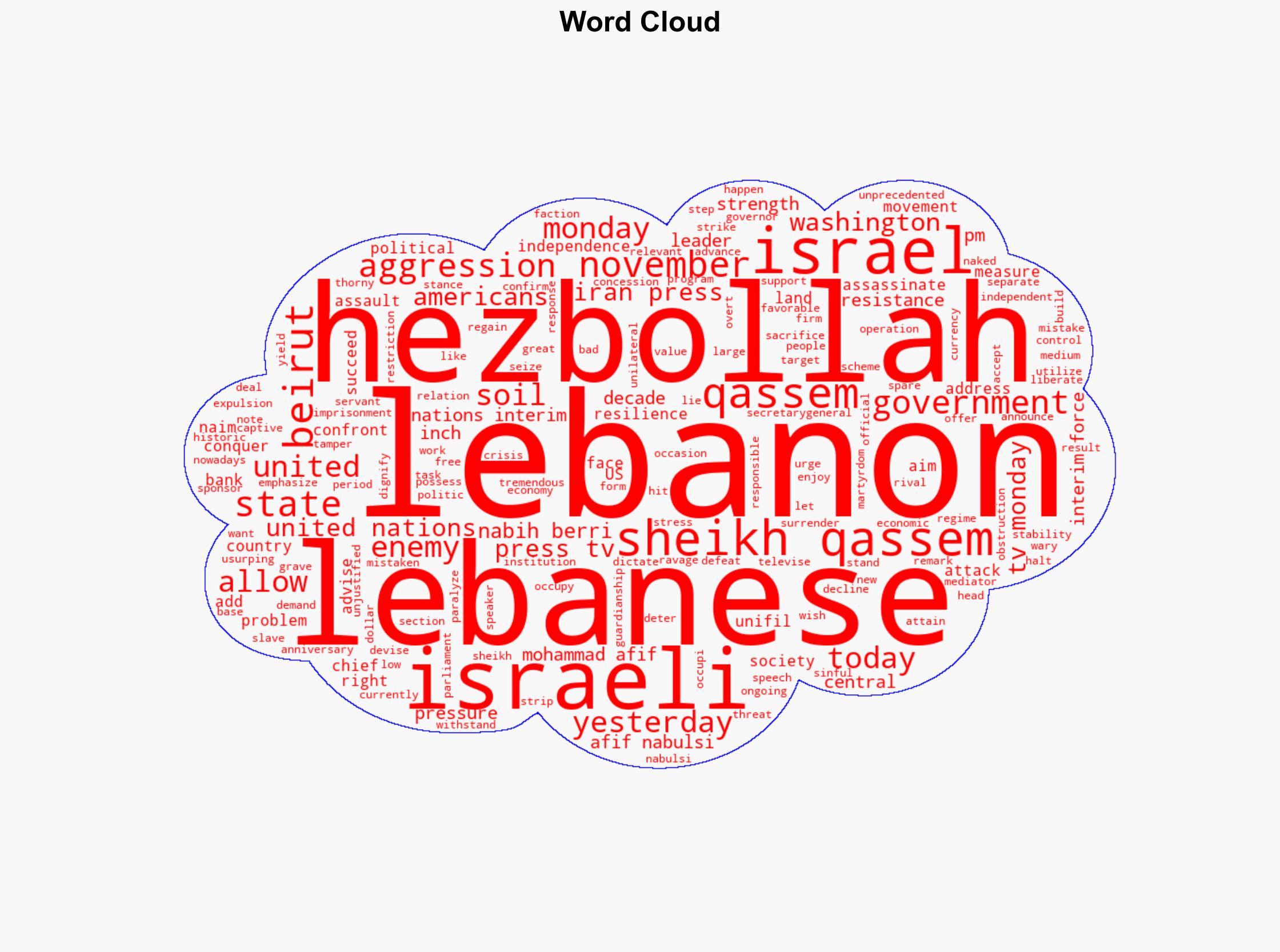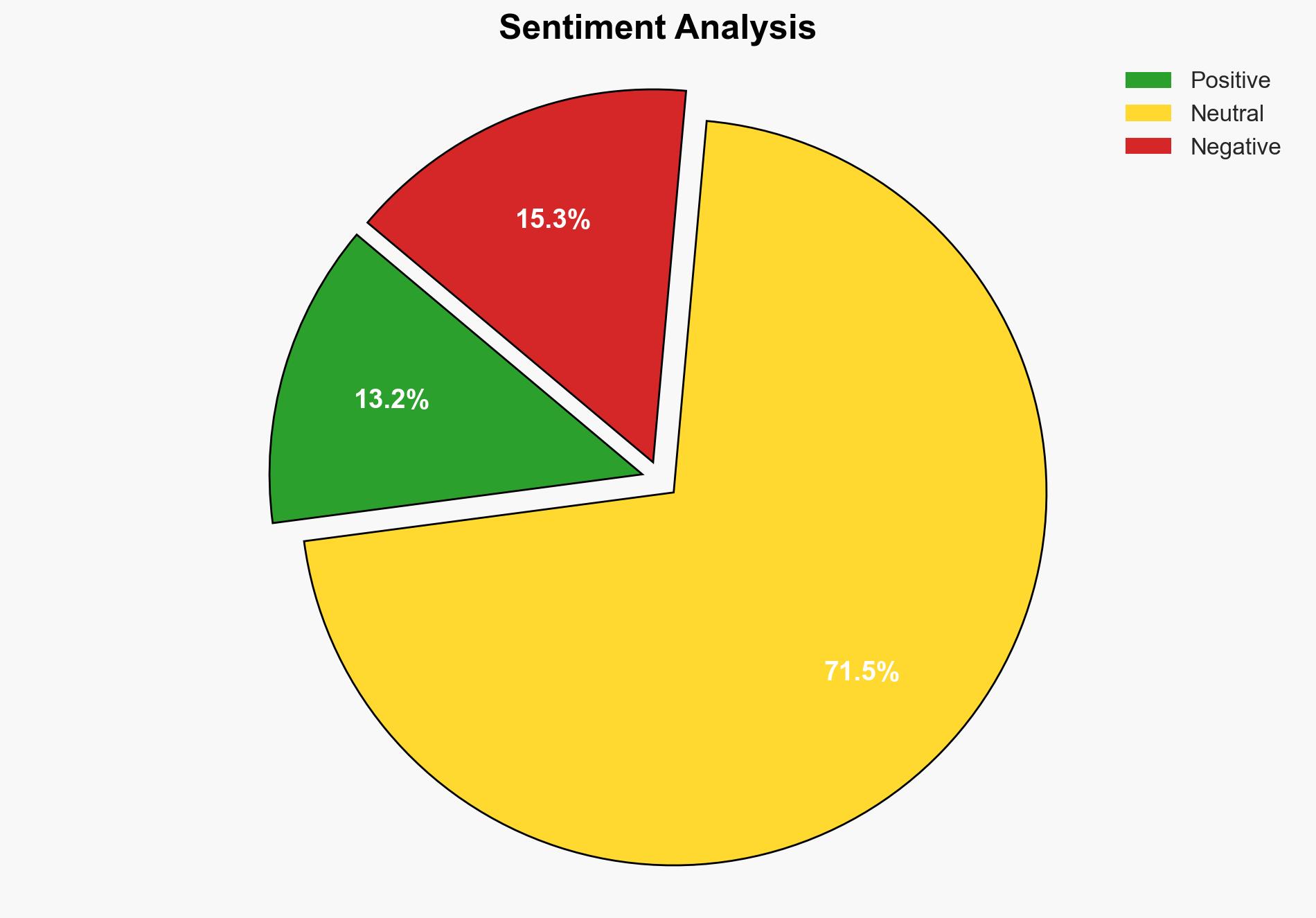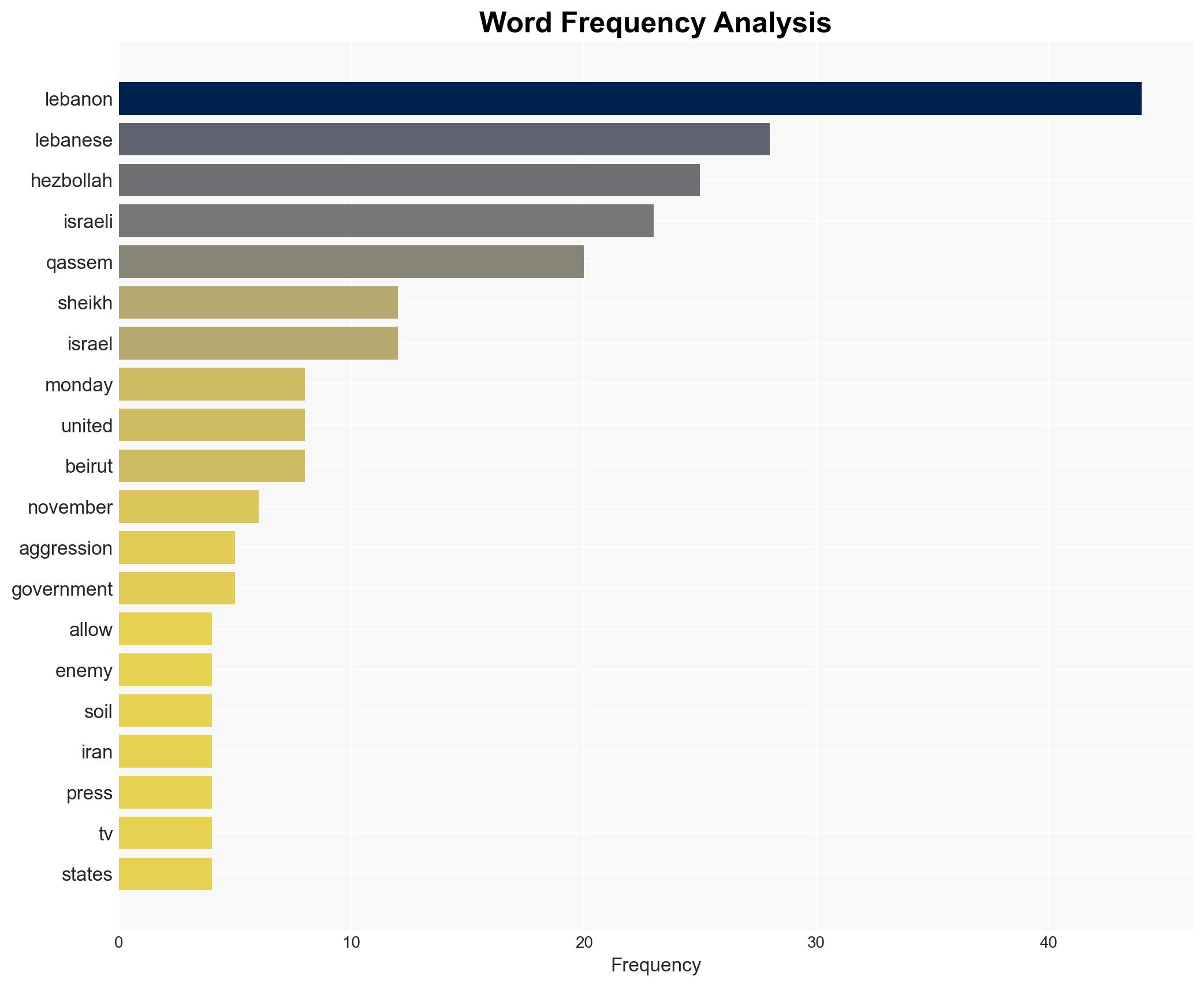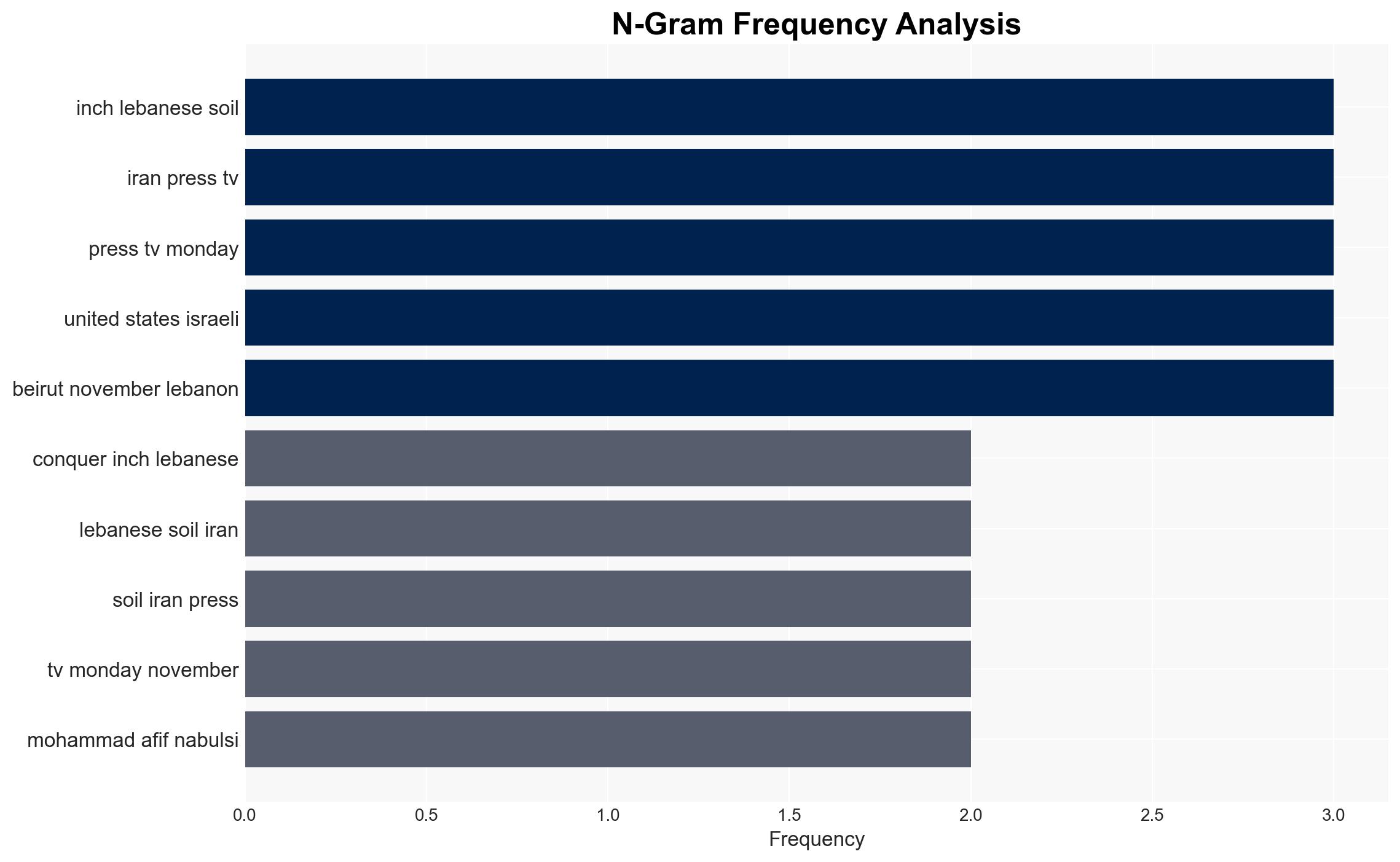Hezbollah chief We will not allow enemy to conquer an inch of Lebanese soil – Globalsecurity.org
Published on: 2025-11-18
AI-powered OSINT brief from verified open sources. Automated NLP signal extraction with human verification. See our Methodology and Why WorldWideWatchers.
Intelligence Report:
1. BLUF (Bottom Line Up Front)
With a moderate confidence level, the most supported hypothesis is that Hezbollah is posturing defensively to consolidate internal support and deter external aggression, particularly from Israel and the United States. The recommended action is to monitor Hezbollah’s military activities and rhetoric for signs of escalation and to engage in diplomatic efforts to stabilize the region.
2. Competing Hypotheses
Hypothesis 1: Hezbollah’s rhetoric is primarily defensive, aiming to consolidate internal support and deter external aggression. This is supported by the emphasis on resistance and the historical context of Israeli aggression.
Hypothesis 2: Hezbollah is preparing for an offensive posture, potentially escalating conflict with Israel to distract from Lebanon’s internal issues. This is suggested by the aggressive language and calls for action against perceived aggression.
Hypothesis 1 is more likely due to the lack of concrete evidence of military mobilization and the context of recent Israeli strikes, which typically provoke defensive posturing from Hezbollah.
3. Key Assumptions and Red Flags
Assumptions: Hezbollah’s statements reflect genuine strategic intentions rather than mere rhetoric. The Lebanese government remains unable to effectively counterbalance Hezbollah’s influence.
Red Flags: Increased military activity or mobilization by Hezbollah, shifts in rhetoric towards more aggressive postures, and changes in the Lebanese political landscape that might empower Hezbollah further.
Deception Indicators: Potential exaggeration of threats to justify increased military readiness or political maneuvers.
4. Implications and Strategic Risks
The primary risk is the escalation of conflict between Hezbollah and Israel, which could destabilize Lebanon further and potentially draw in regional powers. Economically, Lebanon’s crisis could worsen if conflict disrupts trade or prompts sanctions. Politically, Hezbollah’s actions could polarize Lebanese society further, undermining governance and stability.
5. Recommendations and Outlook
- Monitor Hezbollah’s military activities and rhetoric closely for signs of escalation.
- Engage in diplomatic efforts with regional powers to de-escalate tensions.
- Support Lebanese government initiatives to stabilize the economy and reduce Hezbollah’s influence.
- Best-case scenario: Diplomatic efforts succeed in de-escalating tensions, leading to a reduction in hostilities.
- Worst-case scenario: Full-scale conflict erupts, further destabilizing Lebanon and the region.
- Most-likely scenario: Continued low-level tensions with periodic flare-ups, but no major escalation.
6. Key Individuals and Entities
Sheikh Naim Qassem (Hezbollah Secretary-General), Mohammad Afif Nabulsi (Hezbollah’s Head of Media Relations), Nabih Berri (Speaker of the Lebanese Parliament).
7. Thematic Tags
Structured Analytic Techniques Applied
- ACH 2.0: Reconstruct likely threat actor intentions via hypothesis testing and structured refutation.
- Indicators Development: Track radicalization signals and propaganda patterns to anticipate operational planning.
- Narrative Pattern Analysis: Analyze spread/adaptation of ideological narratives for recruitment/incitement signals.
Explore more:
Counter-Terrorism Briefs ·
Daily Summary ·
Support us





